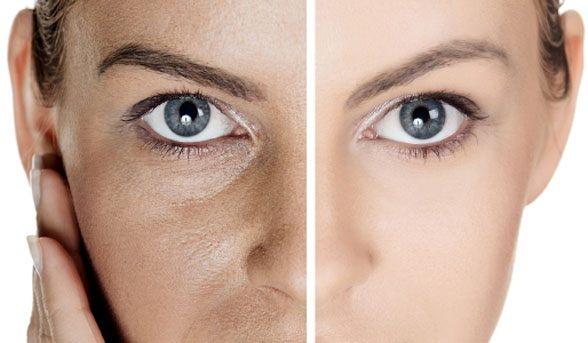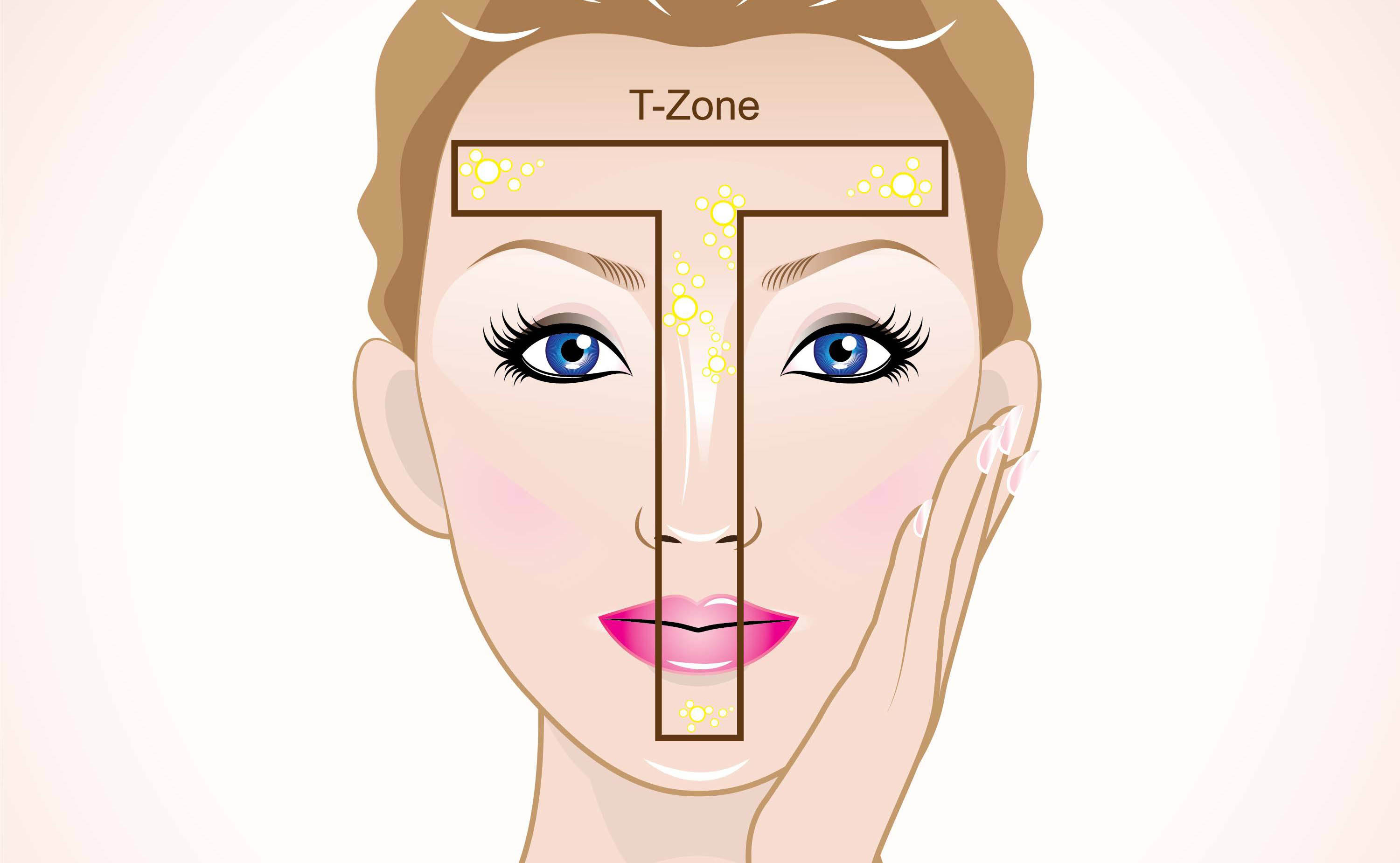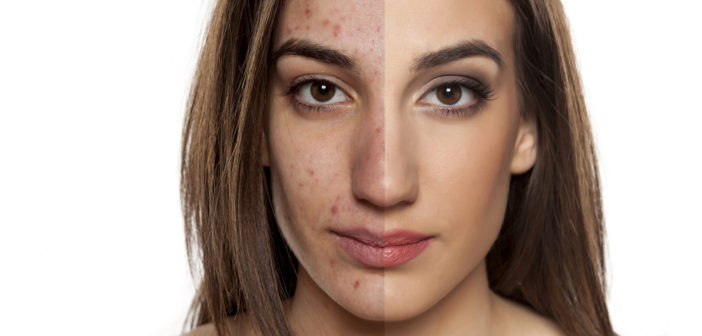Combination skin: Seborrheic skin can be asphyxiated skin, oily skin, combination skin, acne-prone skin. Discover how to distinguish them and our advice on natural cosmetics on how to treat with organic skinceuticals.
In previous posts we talked about skin, types of dry, sensitive and normal skin and how to treat them and seborrheic skin: now we see the various types of seborrheic skin, how to distinguish them, the recommended bioroutine with organic skinceuticals.
Various types of seborrheic skin:
- Dry skin with blackheads and blackheads
- Mixed skin:
- Oily skin
- Impure and acne-prone skin
A type of seborrheic skin: dry skin with blackheads
The dry skin with blackheads (or “asphyxial oily skin”) appears dry because the waxy and non-fluid sebum is not poured out but it obstructs the follicular lumen, originating “blackheads” (when the comedones are open: the blackish appearance is due to the melanin deriving from the cells that are degraded and that are contained in the amorphous material of the comedone). The presence of comedones and hyperkeratosis (thickening of the superficial layer of the epidermis) make it rough to the touch. For this type of skin it is necessary to alternate exfoliating products and nutritious products.

Here is the bio routine recommended by Domus olea Toscana for the face:
- day and night cleasing with sebo lift cream soap
- day routine: with a day face cream and if necessarly with an anti-wrinkles cream
- night routine: with a night renewal treatment
- weekly treatments: Anti age Peeling-mask face and body twice a week; purifyng and repairing mask twice a week
A type of seborrheic skin: combination skin
Combination skin has with simultaneous presence of greasy areas (T-zone of the face) with dilated pores, and other dry areas. The sebum can be oily and / or waxy. For this type of skin it is not possible to use a single product, since one that is too absorbent will make the already dehydrated areas too dry and one too nutritious will make the parts excessively thick with sebum.

Here is the bio routine recommended by Domus olea for the face with mixed skin:
- day and night cleasing with sebo lift cream soap
- day routine: with a day face cream multieffect and if necessarly with an anti-wrinkles cream
- night routine: with a night renewal treatment and for maintenance night renewal treatment only on T area and day face cream multieffect on dry skin
- weekly treatments: Anti age Peeling-mask face and body twice a week; purifyng and repairing mask twice a week
Look at, if you want also, in alternative, our snail slime line (Lumea) and our products (Erboristeria Como) with Portulaca oleracea.
A type of seborrheic skin: oily skin
Oily skin is characterized by high production of oily type of oil on the whole face, the view appears shiny and with enlarged pores, because the excess of sebum tends to enlarge the walls of the follicles. Here is the bio routine recommended by Domus olea for the face with oily skin:
- day and night cleasing with sebo lift cream soap
- day routine: with a sebo lift day face cream
- night routine: with a night renewal treatment and for maintenance sebo lift day face cream or antiage micellar water 5in1
- weekly treatments: Anti age Peeling-mask face and body once-twice a week; purifyng and repairing mask once a week.
A type of seborrheic skin: acne-prone skin

It is called “acne-prone” a hyperseborroic skin with many papules and pustules, is subject to redness and is affected by temperature changes. Acne is a term used to describe certain disorders caused by chronic inflammation of the pilosebaceous follicles, characterized by the formation of keratin caps at the openings of the sebaceous ducts, inflammatory papillae, pustules, nodules, cysts and scars. The clinical characteristic of acne vulgaris is the blackhead, which can be closed (white point) or open (black point). The complex game of four primary factors is the heart of the pathogenesis of acne:
- an increase in sebum production;
- clogging of the pores (which results from dead keratinocytes inside hair follicles clung stronger than people without acne and may also result from high production of sebum);
- presence of Propionibacterium acnes bacteria;
- inflammation.
Small cysts, called comedones, are formed in the hair follicles due to the obstruction of the orifice due to the retention of sebum and keratin material. The activity of a yeast (Pytyrosporum orbicular) and of bacteria (Proponibacterium acnes) inside the comedones leads to the release of fatty acids which cause inflammation inside the cyst with consequent breaking of the cyst wall. A foreign body inflammatory reaction develops as a result of the excretion of fat and keratin debris from the cyst.
Although the true cause of acne is not known, some genetic, hormonal and psychological factors are to be considered favorable causes. The acne-prone skin, in fact, affects about 80% of adolescents, in a more or less severe, but it often prolongs even in adulthood and sometimes occurs even after 25 years. Other factors, which we can define as secondary, are nutrition, stress and climatic conditions.
It seems appropriate to remember how acne constitutes a real pathology, which manifests itself in a multi-faceted way and whose treatment involves a specialized medical approach, particularly in the most serious cases, since inadequate treatment can lead to unwanted cicatricial outcomes.
In the milder forms characterized by sebaceous hypersecretion, presence of comedones or with a limited number of papules and pustules, a cosmetic / cosmeceutical approach aimed at regulating sebum secretion and preventing the onset of inflammatory processes may be sufficient, counteracting the hyperkeratinization of the pyle-sebaceous channel – built from deposits of corneal cells – hyperseborrea and bacterial proliferation at the origin of inflammation.
Here is the routine recommended by Domus olea for the face with acne-prone skin:
- day and night cleasing with sebo lift cream soap
- day routine: with a sebo lift day face cream; for pimples Sebo lift anti imperfections
- night routine: with a night renewal treatment and for maintenance, for oily skin sebo lift day face cream or antiage micellar water 5in1 , for combination or dry skin day face cream multieffect
- weekly treatments: Anti age Peeling-mask face and body once a week; purifyng and repairing mask twice a week.
In case of acne look in alternative our snail slime antiage cream or our products (Erboristeria Como) with Portulaca oleracea.
For any clarification or for more information Contact us.
Follow us on our Facebook and Instagram channels
ALL RIGHT ARE RESERVED, THIS TEXT IS NOT REPRODUCIBLE WITHOUT EXPRESS AUTHORIZATION OF ERBORISTERIA COMO.

